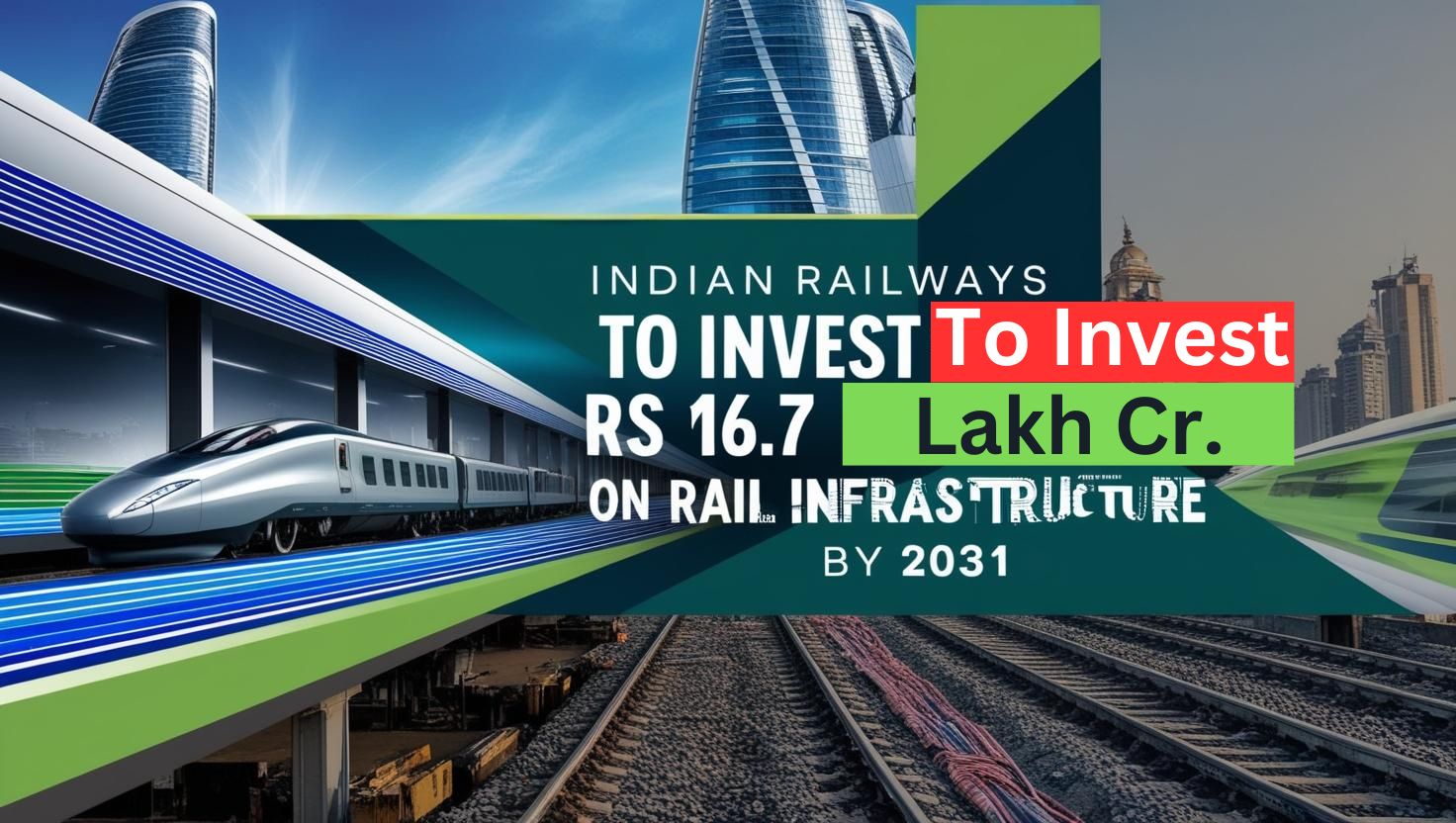Indian Railways (IR) has announced a significant investment of Rs 16.7 lakh crore by 2031 to enhance its infrastructure. This ambitious project includes station redevelopment, the construction of dedicated freight corridors (DFCs), and the advancement of high-speed rail (HSR) networks. The move aims to modernize passenger facilities, optimize freight transport, and strengthen the railway network across the country.
This extensive investment will not only upgrade the travel experience for millions of passengers but also contribute to the nation’s economic growth by improving logistics efficiency.
Key Highlights of the Rs 16.7 Lakh Crore Investment Plan
Indian Railways’ massive spending plan is divided into three major areas of focus:
1. Station Redevelopment
- IR is set to redevelop 1,309 stations with world-class amenities.
- Modernization efforts include the addition of waiting lounges, food courts, retail spaces, and better connectivity.
- Construction on 553 stations has already commenced, with a total project value of Rs 190 billion.
- Enhanced passenger experience is a primary goal of this project.
2. Dedicated Freight Corridors (DFCs)
- Freight corridors are designed to reduce transportation costs and ensure faster cargo movement.
- The Eastern and Western DFCs are already operational.
- Construction of three additional corridors is in progress to further boost logistics.
- These DFCs will play a critical role in improving supply chain management for various industries.
3. High-Speed Rail (HSR)
- The much-anticipated Mumbai-Ahmedabad bullet train is a key milestone in India’s high-speed rail development.
- Seven additional HSR corridors have been proposed.
- While the project timelines for the new corridors remain uncertain, once completed, they will significantly reduce travel time and boost regional connectivity.
Government’s Budget Allocation
The government has shown a clear commitment to the railway sector by increasing its budget allocation consistently.
- FY21: ₹1.55 trillion
- FY25: ₹2.65 trillion
- Growth Rate: 14% CAGR over the past five years
A significant portion of these funds will be directed toward station redevelopment and infrastructure upgrades. Companies like Larsen & Toubro (L&T) have already secured major contracts using the Engineering, Procurement, and Construction (EPC) model.
Limited Opportunities in Station Redevelopment
While station redevelopment projects offer numerous opportunities, most large-scale contracts have already been awarded in the past 2-3 years. As a result, the scope for new large contracts may be limited in the short term. However, companies with expertise in construction and project management can still find lucrative opportunities in maintenance and operational services.
Impact on Indian Economy and Logistics
The Rs 16.7 lakh crore investment in rail infrastructure is expected to have a transformative impact on the Indian economy.
- Faster Goods Movement: Enhanced freight corridors will reduce the delivery time of goods, benefiting industries and consumers.
- Regional Development: Improved rail connectivity will drive economic growth in tier-2 and tier-3 cities.
- Employment Generation: Thousands of jobs will be created in construction, engineering, and operational management.
- Tourism Boost: High-speed rail corridors will encourage tourism and facilitate easier travel.
Frequently Asked Questions (FAQs)
1. What is the total investment Indian Railways plans to make by 2031?
- Indian Railways plans to invest Rs 16.7 lakh crore by 2031 for infrastructure development.
2. How many railway stations will be redeveloped?
- A total of 1,309 stations will be redeveloped with modern amenities.
3. What are Dedicated Freight Corridors (DFCs)?
- DFCs are special railway corridors designed for the efficient transportation of goods, reducing travel time and costs.
4. Which companies are involved in the station redevelopment projects?
- Companies like Larsen & Toubro (L&T) are actively participating in projects using the EPC model.
5. What is the status of the Mumbai-Ahmedabad Bullet Train project?
- The project is progressing, and the construction of high-speed rail corridors is being planned across various routes.
6. How will the investment impact the Indian economy?
- The initiative will create jobs, improve logistics, reduce travel time, and boost regional economic development.
7. Is there a timeline for the completion of the new high-speed rail corridors?
- While the timelines are not confirmed, the government has prioritized the successful execution of the bullet train project.
8. How will passengers benefit from the station redevelopment?
- Passengers can expect better facilities, cleaner environments, and faster, more comfortable journeys.
Conclusion
The Rs 16.7 lakh crore investment in Indian Railways marks a bold step towards a more modern and efficient railway network. With a focus on station redevelopment, freight corridors, and high-speed rail, the initiative is set to transform the travel experience for millions of passengers while strengthening the country’s logistics infrastructure.
As projects progress and new opportunities emerge, this ambitious plan will contribute significantly to India’s economic growth, create employment, and boost regional connectivity. Stay updated on further developments through the official Indian Railways website.
For more information, visit Indian Railways Official Website.


